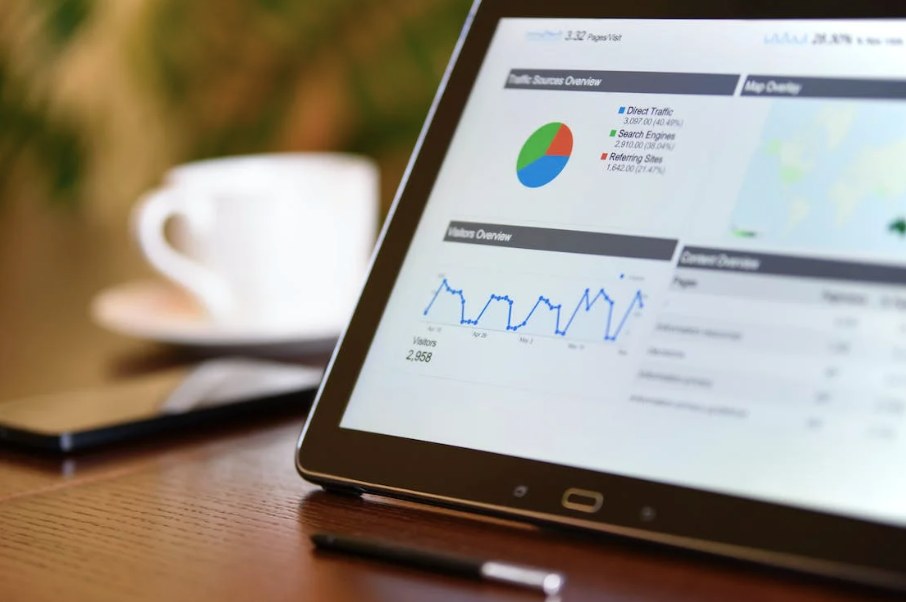We all believe in numbers, especially when they show that our businesses are doing well. However, not all numbers are created equal. Some metrics, often called “vanity metrics,” can give us a false sense of progress and should be avoided.
These metrics may look impressive but don’t offer any real value in helping you gauge your brand’s performance or plan future strategies. Tracking these vanity metrics can be harmful to your business.
So, what are some of the digital marketing vanity metrics you should be aware of?
11 Vanity Metrics to Look Out For
Taking pride in the statistics that make your business look good is all right. But often, the numbers mentioned in headlines and press releases can be misleading. For example, having a good traffic rank on the website or a high number of social media followers does not always convert into actual sales.
In general, a vanity metric continues to grow over time. The numbers keep getting bigger and bigger with no end in sight. Some examples of vanity metrics include pageviews, users, downloads, and shares on social media.
Vanity metrics can be harmful to your business because they give you a false sense of progress. While tracking your brand’s performance is essential, you should be aware of the vanity metrics that can mislead you.
1. Increase In Website Traffic
Website traffic is one of the most popular vanity metrics. It is often used to gauge a website’s or digital campaign’s success. While more traffic is generally better, it doesn’t necessarily mean that your website or campaign is effective.
For example, you may have a spike in traffic after launching a new marketing campaign. But if that campaign is not targeted to your ideal customers, then the traffic increase won’t matter. It is important to remember that not all website visitors are equal. It is more important to focus on quality over quantity.
One can easily get deceived by the sudden increase in website traffic. Increased traffic doesn’t always mean effective marketing tactics. The numbers don’t exactly tell us the reason for the spike. It could take a lot of time to discover the answer. In addition, increased traffic doesn’t matter unless it results in a conversion.
2. Conversions
Conversions are often used as a vanity metric because they are easy to track. All you need to do is count the number of people who take the desired action on your website. However, conversions don’t always reflect the effectiveness of your marketing efforts.
For example, let’s say you’re running a digital marketing campaign to increase sign-ups for your newsletter. You may see a spike in conversions after the campaign. But if those new subscribers don’t read your newsletter, then the conversion is not valuable.
It is important to track conversions, but you should also look at the quality of those conversions. Make sure you attract the right kind of leads interested in your product or service.
3. Social Media Followers
It is a common misconception that more social media followers equate to success. While it is true that a high number of followers can be impressive, it doesn’t necessarily mean that those followers are engaged with your brand.
For example, let’s say you have a Twitter account with 100,000 followers. But if only a small percentage of those followers are interested in your content, then that number is not valuable.
Having massive social media followers doesn’t always result in good social engagement. The reason is that the number of followers does not entirely indicate your website’s success. Social media followers can be easily bought and are not always organic. Therefore, you should not mistake social media followers to be your brand followers.
Here’s how you can determine the success of your social media pages:
Brand Awareness: It can include your post’s reach and engagement in terms of likes, shares, comments, and subscribers.
Customer Experience: How people use your social platform to share their experiences. It also includes your promptness to respond to your followers.
Downloads: How many downloads took place from your social media posts?
Registrations: The number of registrations for online events that resulted from your social media posts.
Website Traffic: How are your social media pages contributing to your website’s traffic?
4. Email Subscribers
The quality of your email list is more important than the quantity. It doesn’t matter how many people are subscribed to your emails if they never open or click on them.
A good way to gauge the quality of your email list is to look at your open and click-through rates. If you have a large number of subscribers but a low open rate, then that’s an indication that your list is not very engaged.
It is also important to segment your email list to send relevant content to the right people. You’ll likely see a low open rate if you send generic emails to your entire list. But if you segment your list and send targeted content, you’ll likely see higher open and click-through rates.
5. Keywords
We all understand the importance of keywords in SEO. Keyword rankings show how well your website is doing for specific keywords. However, they can be deceiving because they don’t always reflect the full picture.
It is essential to track your keyword ranks, but you should also look at other factors, such as organic traffic and conversion rates. For example, even if you’re ranking No. 1 for a particular keyword, that doesn’t necessarily mean you’re getting a lot of organic traffic from that keyword.
And even if you’re getting a lot of organic traffic from that keyword, it doesn’t necessarily mean you’re getting many conversions. So while keyword rankings are important, they should not be the only metric you’re looking at.
In addition, keywords can also be deceiving due to the following reasons:
Branded Keywords: Branded keywords are a part of vanity metrics as they can give biased results and boost your total organic rankings, which might not be accurate. The reason is that most people searching for your brand are already aware of it.
Therefore, you should group your keywords into branded and unbranded categories to better understand your website’s performance.
Keyword Volume: If you’re ranking for a particular keyword, but it has a low search volume, then that keyword will not be very valuable. Likewise, if you’re ranking for a high-volume keyword, but it’s not converting, that keyword is also not very valuable.
That’s why you should focus on keywords with a high search volume and conversion rate.
Keyword Relevance: It is also important to track the relevancy of your keywords because if your keywords don’t align with your business offerings, then that’s not going to be very valuable. For example, if you’re a plumber and ranking for the keyword “best restaurants in town,” that will not be very relevant to your business.
So it is essential to review your keywords regularly and focus only on the keywords that are relevant to your business.
Although you cannot rely entirely on these metrics to determine SEO’s success, that doesn’t mean you should disregard them completely. After all, they give you a basic idea of how well your website is doing.
6. Page Views
Many marketers think that the number of page views is a good metric to gauge the success of their SEO efforts. But page views alone don’t tell the whole story.
It is important to use page views with other actionable engagement metrics such as unique visitors, bounce rate, visit time on site, content downloads, conversion rates, and pages per visit to get a better understanding.
7. Time on Site
Time spent on a website can be misleading for several reasons. For one, it doesn’t necessarily mean that the visitor is engaged with your website. They could be spending a lot of time for many reasons, such as trying to find what they’re looking for or figuring out how to navigate your website.
In addition, time on site can be affected by some factors, such as the design of your website, the quality of your content, and the overall user experience. So while time on site is an important metric, it should not be the only metric you’re looking at.
8. Pages Per Visit
A high page-per-visit number could mean two things: visitors are genuinely engaged or utterly confused by your website and can’t find what they want.
However, as discussed above, it’s best to use this one with engagement metrics.
9. Backlinks
Backlinks do serve an important purpose in SEO, but they should not be the only metric you’re looking at. The quality of backlinks is more important than quantity.
If you have a lot of low-quality backlinks, it could hurt your website’s ranking. So while backlinks are important, don’t focus too much on them. Review your backlink profile regularly and focus on getting high-quality backlinks from reputable websites.
10. Purchase and Downloads
While it is considered good to have purchases or downloads from your website, this metric can give a wrong impression. This is because the figures might increase even if tons of uninstalls happen simultaneously.
It is best to measure other things, such as the time consumers spend with you, the number of conversions from trial to purchase, subscription renewals, and app uninstalls.
11. Social Shares
Just because many people share your content on social media doesn’t mean they’re interested in your brand or what you’re selling.
Social shares are a good vanity metric, but they should not be the only metric you’re looking at. Make sure to measure other things, such as website traffic, conversion rates, and sales, to get a better idea of how well your website performs.
Digital marketing is a complex process, and many factors go into it. So while vanity metrics can give you a basic idea of how well your website is doing, they should not be the only metric you’re looking at.
Boost Your Digital Marketing Efforts With SEO Vendor
Numbers are good and all, but what matters is the quality of traffic that your website is getting. If you want to get the best results, then you need to focus on quality over quantity. And that’s where SEO Vendor comes in.
We are a team of experienced digital marketers who can help you boost your website’s traffic and ranking. We’ll work with you to create a custom digital marketing plan tailored to your specific needs and goals. Contact us today to get started!











One comment
Hubert Kerluke
October 24, 2022 at 7:04 am
Thanks for sharing this amazing piece of the blog about 11 Digital Marketing Vanity Metrics to Know and Avoid. I will definitely share this blog with anyone I know.
Comments are closed.